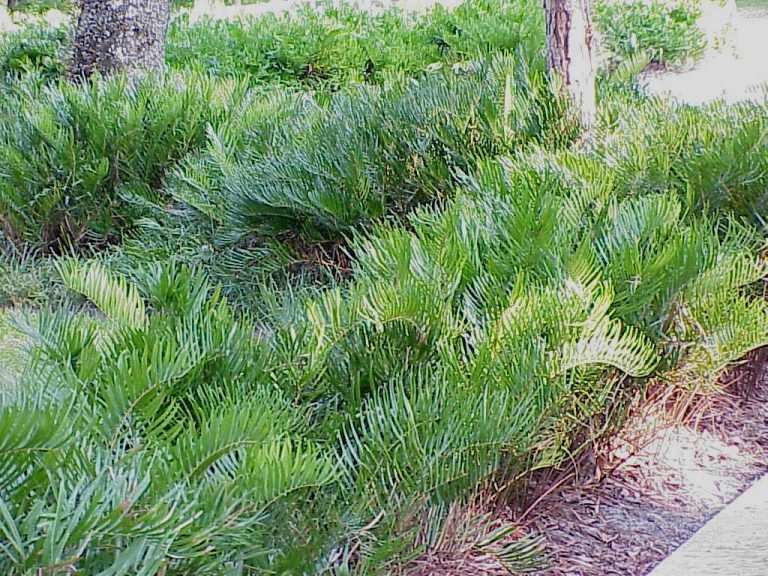Coontie

Common Names: Coontie, Coontie Palm, Arrowroot, Comfort root, Compties, Contis, and Seminole Bread
Latin Name: Zamia pumila
Family: Zamiaceae
Habit: A low growing, evergreen, shrub that grows to a height of 2 – 3 feet with fern/palm like appearance.
Leaves: Pinnately compound with 20 – 60 leaflets. Leaflets are approximately 8 – 20 cm long and 3 – 15 cm wide.
Petioles are long and the total length of the leaf can be up to 1 meter at maturity.
Flowers: The flowers of the coontie appear in cones with male and female cones occurring on separate plants.
The cones emerge, and grow, at ground level and are large and reddish brown in color. Male cones are lance shaped and female cones are more rounded.
Cones appear on the plant in August.
Habitat: Coontie is found occurring naturally in oak hammocks (forests), pinelands, and shell middens. It prefers well drained sites with high levels of limestone under the surface of the leaf litter.
It is native to the West Indies.*
Landscape: It is a much sought after landscape plant because of its evergreen, fern/palm look, and low growing habit. It can be used as a specimen or planted in large groups to provide low growing greenery in the landscape.
It can be grown in full sun or part shade and is drought tolerant once established. It is mildly salt tolerant, but not tolerant of standing water and prefers dry sites.
Range: It can be grown in zones 8b – 11.
Wildlife use: Coontie is used as a larval host plant by the atala butterfly, but this butterfly only occurs in the southern part of the state from Port Canaveral southward.
For more info on the atala butterfly check out:
The Butterflies and Moths.org info on the atala butterfly.
Propagation: Coontie can be propagated by seeds or transplanting small specimens.
Notes: *There is debate as to whether or not Zamia pumila is native to Florida with botanists declaring it native to the West Indies. Unfortunately there will always be clumpers and splitters in the scientific world continually muddying the waters for the layperson. Here’s what Dan Ward had to say about it in 2016:
“Persons who study and grow Florida cycads fall into two camps. There are the taxonomists, few
in number, experienced in determining workable classifications, seemingly inflexible in their judgment
that all Florida Zamia constitute only a single taxon. And there are the horticulturists, intimately familiar
with the plants both in the field and in cultivation, who maintain there are several Zamia in Florida that
can be distinguished by anyone who takes the time to look. ….” [1]
In his book, Florida’a Best Native Landscape Plants, Gil Nelson has this to say about it:
“Botanists have had a difficult time with the taxonomy of coontie. Various references may list as many as five species of Zamia as occurring in Florida. Current opinion holds that there is but a single species.” [2]

[1] Keys to the flora of Florida – 32, Zamia (Zamiaceae)
Daniel B. Ward, Department of Botany, University of Florida Gainesville, Florida
[2] Nelson, Gil. Florida’s Best Native Landscape Plants: 200 Readily Available Species for Homeowners and Professionals. 1st ed., University Press of Florida, 2003.
